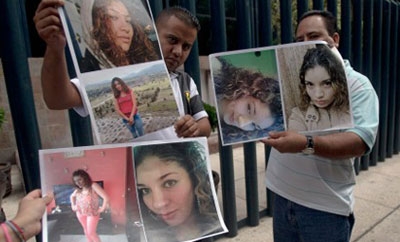Federal authorities in Mexico said the case of 12 youths snatched from a bar in the capital and murdered was tied to a dispute between two of the country’s major drug cartels, raising questions about the links between local drug gangs and groups with an international reach.
Officials from the country’s Attorney General’s Office say the so-called Heaven case, named for the bar from which the youths went missing, was linked to a fight between the Sinaloa Cartel and the Beltran Leyva Organization (BLO).
They said the cartels are battling for control over the increasingly lucrative local drug market in Mexico City, which is currently in the hands of the BLO, reported Milenio. They also said those who led the murder scheme were hitmen from Durango, where part of the Sinaloa Cartel is based, reported La Jornada.
The youths disappeared from the bar Heaven in Mexico City’s Zona Rosa district earlier this year. Their bodies, along with that of another man, were found in a clandestine grave on a ranch in the outskirts of the city.
At the time, city authorities claimed the murders were the result of a dispute between local gangs over drug dealing turf, and were unrelated to major organized criminal groups.
According to federal authorities, however, two of the victims were wanted by the assassins for the murder of another local dealer; the rest had the misfortune of being with them.
InSight Crime Analysis
The conflicting official accounts highlight the complexity of the linkages between local gangs and major international drug traffickers. While gangs often buy or receive their illicit product wholesale from the bigger groups and have to pay a percentage of their earnings to these national organizations, these two levels of the underworld can also operate semi-autonomously, with varying degrees of relations.
Recent violence has been attributed to La Union, a group that has been edging out the city’s leading gang, the Tepito Cartel. La Union has been pointed to as the gang responsible for the Heaven killings. Yet, both gangs also have ties to larger groups: the Tepito Cartel is said to have connections to the BLO, and La Union includes former members of the Familia Michoacana.
There may also be a political component to this story. Mexico City authorities have downplayed growing drug violence in the capital, which has until now been perceived as an “oasis” from the drug war affecting the rest of the nation.
SEE ALSO: Beltran Leyva Organization News and Profile
The complexity of these connections in the capital, and nationally, may help explain the differing accounts from federal and local authorities. And in the end, both assertions could carry some truth to them.

